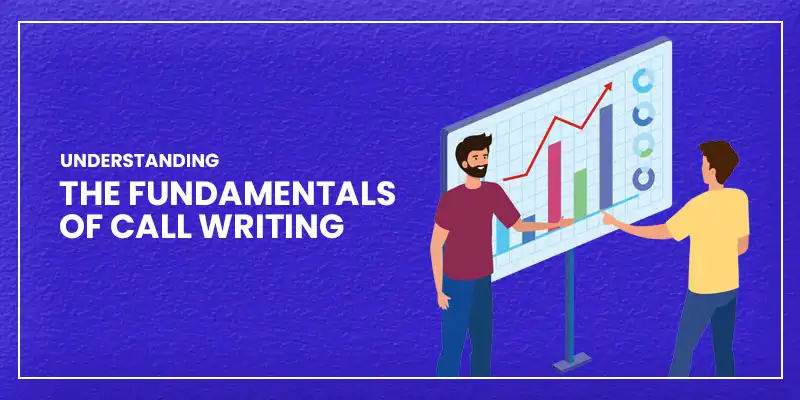Call writing involves selling call options on a stock that an investor already holds. This strategy generates premium income while offering limited potential for additional profit. Call writing presents two primary outcomes by setting predetermined strike prices and expiration dates: retaining the premium if the option expires or selling the shares if exercised. This article presents an in-depth look into call writing, explaining it factually and clearly.
Contents
- Understanding Call Writing
- Mechanics of Call Writing
- Potential Outcomes
- Considerations and Limitations
- Risk Factors
- Conclusion
- FAQs
Understanding Call Writing
Call writing involves the sale of call options on stocks one already owns. By writing a call option, the writer grants the option buyer the right to purchase the underlying shares at a predetermined price (the strike price) within a specified period. The premium received at the time of sale is collected immediately, which adds to the writer’s income. The premium received may supplement the overall return if the option is not exercised, although the stock’s performance and market direction still affect outcomes.
Note: Call writing is not guaranteed to generate returns and involves exposure to price movements of the underlying stock.
Read Also: How To Read An Options Chain: A Guide For Indian Investors
Mechanics of Call Writing
In executing a call writing strategy, the investor selects an appropriate strike price and an expiration date for the option. The premium received upon sale represents compensation, independent of whether the option is exercised. Should the stock’s market price remain below the strike price by expiration, the option typically expires worthless, and the writer retains both the premium and the underlying stock.
If the stock price rises above the strike price, the option buyer may exercise the option, which obligates the writer to sell the shares at the predetermined strike price. In either outcome, the premium received may help partially offset potential downside but does not guarantee overall profitability or prevent capital loss.
The sale of a call obligates the writer to sell the stock if exercised, which could result in missed gains if the stock appreciates significantly.
Potential Outcomes
A key aspect of call writing is the dual outcome that can occur at expiration. First, if the option expires out of the money, the writer retains ownership of the stock and benefits from the premium collected. Second, if the option is exercised, the writer sells the stock at the strike price and receives the premium regardless of the outcome; however, the total return depends on the underlying price movement and timing of execution.
Considerations and Limitations
While call writing may add to overall returns in stagnant or moderately rising markets, its design does not provide complete downside protection. The premium income may help reduce minor price declines, but substantial drops in stock price may not be adequately offset. Additionally, the potential for profit is capped by the strike price, limiting gains if the underlying stock experiences significant upward movement. This method should be applied with an understanding of market dynamics and its impact on expected outcomes.
Risk Factors
Investors employing call writing face several inherent risks. A notable consideration is that while the premium offers a small cushion, it does not eliminate all risks associated with changes in the stock price. Investors should be aware that the obligation to sell if the option is exercised might result in the unintended exit from an otherwise profitable holding.
There is also the possibility that market conditions can change rapidly, affecting the strategy’s overall performance. Market updates and regulatory changes must be monitored by those employing this method.
Traders should evaluate margin requirements and remain informed of regulatory changes applicable to derivatives trading.
Read Also: Key Factors That Influence Option Pricing
Conclusion
Call writing involves selling call options on held stocks. While the strategy may provide premium income, it also imposes contractual obligations and limits upside potential. The approach generates immediate premium income while leaving the stock position intact if the option expires unexercised. However, the method limits potential capital gains and may expose the writer to risks associated with holding the underlying asset. The information here is presented solely for educational purposes.
Disclaimer: Investment in the securities market is subject to market risks. Please read all scheme-related documents carefully before investing. The information provided in this article is for educational and informational purposes only and is not intended as investment advice. Trading in derivatives, including options, involves substantial risk and is not suitable for all investors. Past performance is not indicative of future results. Readers are advised to consult with their financial advisors before making any trading decisions.
FAQs
Regulations vary by market rules. Ensure adherence to guidelines set by exchanges and comply with legal requirements. Review updates to maintain compliance in all cases.
Always refer to SEBI and NSE guidelines regarding derivatives trading before initiating any position.
Call writing can be incorporated into diversified portfolios. It may generate returns while potentially mitigating declines, but should be evaluated within overall risk management frameworks.
Any strategy should be evaluated in the context of one’s risk appetite and investment objectives.
Technical analysis tools such as moving averages, support and resistance levels, and trend indicators are useful in monitoring market trends relevant to call writing activity.
Technical indicators should not be used in isolation. They offer probability-based insights, not guarantees.

